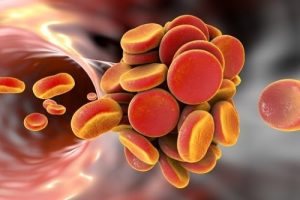
Extracts from the articles are as follows:
Thrombosis vs. Embolism: Symptoms, Causes, and Treatment
Thrombosis and embolisms are different conditions, but they’re both characterized by a blood clot. Thrombosis happens when a thrombus, or blood clot, forms in a blood vessel. As a result, blood flow through the vessel is reduced. With an embolism, a piece of a blood clot (embolus), foreign object, or other bodily substance becomes lodged in a blood vessel. This largely obstructs blood flow.
This clot can travel through the body. Thromboembolism, a similar condition, is when an embolism from a blood clot specifically causes a reduction in blood flow. Many people develop blood clots, and there are many causes of each condition. In cases where blood flow is blocked in a deep vein or large artery, there is a much greater health risk. Continue reading…
Age spots are a common part of getting older. While many people spend hundreds of dollars on over the counter solutions hoping they will work, others are discovering essential oils for age spots.
Age spots, which are also referred to as liver spots, are small dark areas on the skin that vary in size. Typically, age spots appear on the face, hands, and arms, but they can also appear elsewhere. These are areas of the body that experience the most sun exposure year after year.
The spots are usually seen in people over the age of 50; however, it is possible to start getting them when you are younger, especially if you spend a lot of time outside in the sun. Continue reading…
Liver disease comes with a number of unpleasant symptoms. While diet can help those who are suffering, yoga for the liver can also improve symptoms.
The liver happens to be one of the most important organs in our body. The liver plays a key role in all our metabolic processes. Common liver diseases include alcoholic liver disease, hepatitis, fatty liver disease, cirrhosis, and liver cancer. Yoga for the liver can stimulate the organ and help ease symptoms such as constipation, indigestion, depression, nausea, and brain fog.
Practicing different yoga poses for the liver can revitalize the liver. It is important to remember to breathe throughout the exercises and drink plenty of water to help flush toxins out of your body following the poses. Continue reading…
Hypertension, or high blood pressure, comes in stages that correspond with your blood reading number. Stage 1, or mild hypertension, is defined as a blood pressure reading of 130–139 over 80–89. If your blood pressure measures between this range, your doctor may express some concern and suggest lifestyle changes and medications to reduce your blood pressure.
To obtain an accurate blood pressure reading, your doctor will use an inflatable arm cuff and a pressure-measuring gauge. Your reading will be measured in millimeters of mercury (mmHg) and consists of a systolic number (the top one) and a diastolic number (the bottom one).
Systolic blood pressure refers to the pressure at which blood is hitting your arteries as the blood is pumped from your heart. Diastolic is the pressure of the blood returning to the heart. Generally, a reading of 120/80 mm/Hg is considered healthy. Continue reading…
Ulcerative proctitis is a mild form of ulcerative colitis. Between 25 and 30 percent of people diagnosed with ulcerative colitis have this form of the condition. Ulcerative proctitis is an inflammatory bowel disease (IBD) characterized by small lacerations in the intestinal tract which break through the mucosal lining.
This form of colitis affects the rectum and approximately 20cm of the colon. It is not a contagious condition. Continue reading…